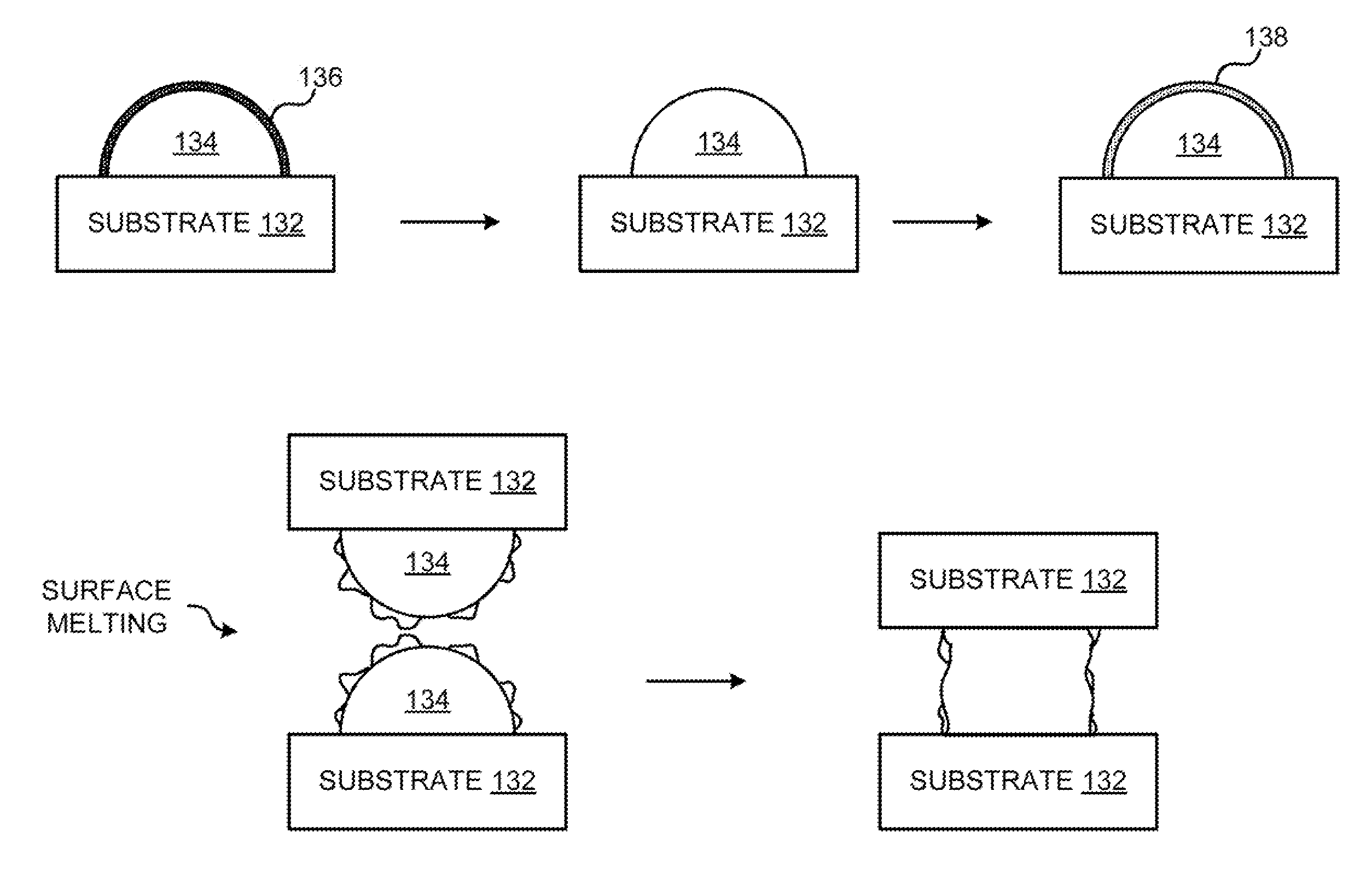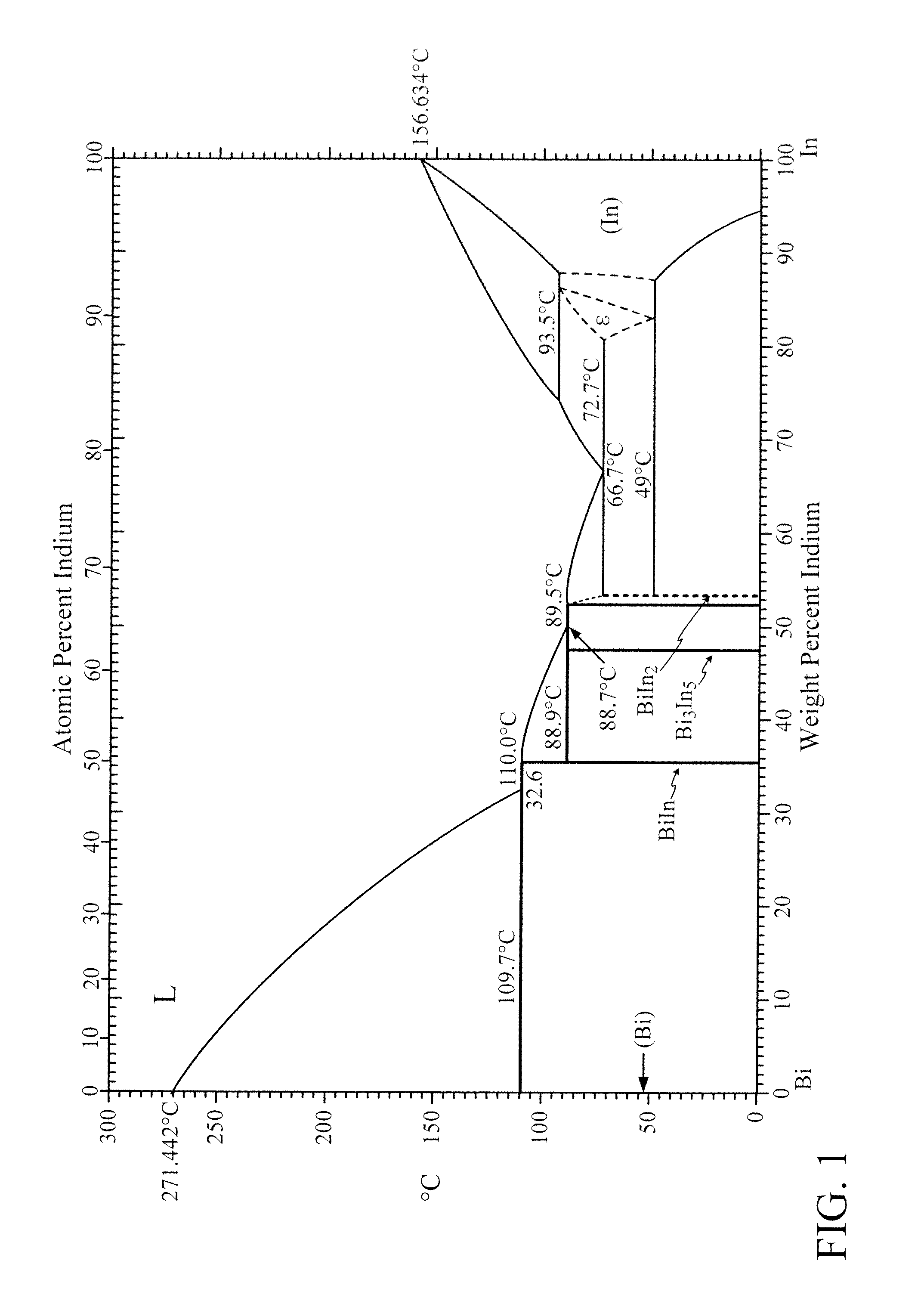Metal coating for indium bump bonding
a technology of indium bump and metal coating, which is applied in the direction of soldering apparatus, manufacturing tools, and capacitors, can solve the problems of fluxless solderability degradation of indium bump, oxidation of indium bumps, and negative impact on cold welding
- Summary
- Abstract
- Description
- Claims
- Application Information
AI Technical Summary
Benefits of technology
Problems solved by technology
Method used
Image
Examples
Embodiment Construction
[0021]The present invention is directed toward compositions and structures, and toward methods for providing compositions and structures for metal bump bonding with relatively low temperatures, preferably lower than the melting temperature of indium. To obtain a lower processing temperature (preferred embodiments have a melting point of <100° C.), a metal coating method is provided using, in some embodiments, compositions of metals that have a eutectic reaction with indium with a relatively low eutectic temperature. For example, some compositions have a eutectic reaction with indium with a eutectic temperature lower than 150° C.
[0022]According to various embodiments, a metal or alloy layer is deposited on the indium bump surface. Preferably, the material is chosen such that the metal or alloy forms a passivation layer that is more resistant to oxidation than the underlying indium material. The passivation material is also preferably chosen to form a low melting temperature alloy wit...
PUM
| Property | Measurement | Unit |
|---|---|---|
| Fraction | aaaaa | aaaaa |
| Fraction | aaaaa | aaaaa |
| Fraction | aaaaa | aaaaa |
Abstract
Description
Claims
Application Information
 Login to View More
Login to View More - R&D
- Intellectual Property
- Life Sciences
- Materials
- Tech Scout
- Unparalleled Data Quality
- Higher Quality Content
- 60% Fewer Hallucinations
Browse by: Latest US Patents, China's latest patents, Technical Efficacy Thesaurus, Application Domain, Technology Topic, Popular Technical Reports.
© 2025 PatSnap. All rights reserved.Legal|Privacy policy|Modern Slavery Act Transparency Statement|Sitemap|About US| Contact US: help@patsnap.com



